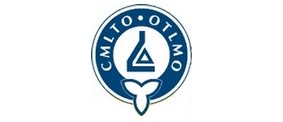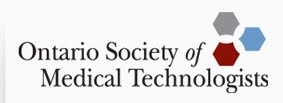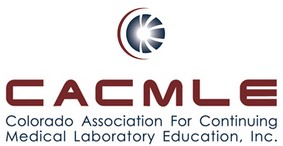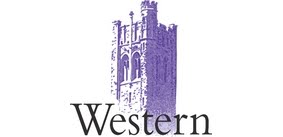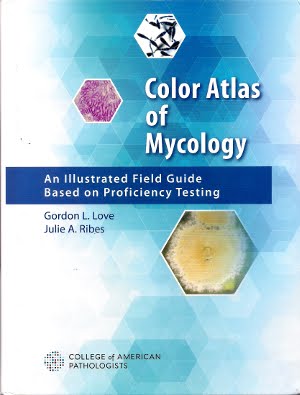Pneumococcal meningitis
Recently a 45 year old gentleman presented himself to the emergency department of our facility with suspected meningitis. The attending ER physician performed a lumbar puncture on the subject to obtain a sample of cerebral spinal fluid (CSF) which was noticeably cloudy. The specimen was sent to the laboratory where chemistry would measure the protein and glucose levels, haematology would perform a cell count and differential of the cells present, and to microbiology where we’d attempt to identify any infecting agent.
A number of different organisms can infect the blood stream (bacteraemia/septicaemia) and make their way to the meninges, the membranes that surround and protect both the brain and spinal cord.
The infection causes an inflammatory response and can produce various symptoms such as;
- Headache
- Stiff neck
- Photophobia (dislike of bright lights)
- Fever and chills
- Drowsiness, confusion and possible delirium
Pneumococcal meningitis may not result in a rash which is common in Meningococcal meningitis (Neisseria meningitidis)
Pneumococcus can be found as commensal (normal) flora in up to 40% of the population and is the most common cause of meningitis in adults and in children over the age of two. The organism may reside in the back of the throat and in the nose where it can be passed on to others through close physical contact such as kissing or through coughs and sneezes. If the opportunity presents itself, this opportunist may invade the body to cause serious infections such as bacteraemia or meningitis. Still rather rare pneumococcal meningitis occurs at a rate of about 2 in every 100,000 of the Canadian population (1).
Predisposing factors for acquiring pneumococcal meningitis may include;
- Diabetes
- Compromised immune system
- Pneumococcal pneumonia
- Alcoholism
- Head injury
- Lacking a spleen
- Other major chronic diseases
Laboratory Testing;
Chemistry - CSF is analyzed for it’s glucose and protein levels. Bacteria consume glucose for energy and a drop in the CSF to serum glucose ratio may provide a clue that a bacterium is the invading agent. Viruses do not utilize glucose for energy but may hijack the invaded cells ‘cellular mechanisms’ to produce protein necessary for its own reproduction an multiplication. Glucose levels that remain in the normal range with an increase of protein level may suggest a viral encephalitis. In our patient the levels were as follows;
In our patient;
- Glucose = 2.3 mmol/L (2.2 - 3.9 mmol/L Normal Range)
- Protein = 3.65 g/L (0.12 - 0.60 g/L Normal Range) -High
In our patient;
- Lymphocytes = 0.2 X 10^9/L (1.00 - 4.00 X 10^9/L Normal Range) -Low
- Monocytes = 0.7 X 10^9/L (0.00 - 1.20 X 10^9/L Normal Range)
- Neutrophils (PMN) = 17.2 X 10^9/L (2.00 - 7.50 X10^9/L) -High
Microbiology - In micro, we perform a gram stain on the specimen in an attempt to visualize the invading organism. A cytosine is usually performed which simply concentrates (via centrifugation) an aliquot of the CSF specimen onto a glass microscope slide for staining. In addition to concentrating the possibly small numbers of bacteria, the cytosine process ‘flattens’ the Neutrophils, thereby spreading them out and allowing better viewing of any bacterial cells present, particularly if ingested by the PMN.
The gram stain process not only makes the stained bacteria easier to visualize but may assist in differentiation of the invading bacterial species. Pneumococci (Streptococcus pneumoniae) are gram positive cocci and will appear as dark bluish-purple dots in pairs or short chains. Meningococcal (Neisseria meningitidis) are gram negative diplo-cocci and appear as red ‘coffee bean-like’ cells - in pairs with flattened adjacent sides. (gram negative bacilli may indicate a bacterial pathogen such as Haemophilus species while a gram positive bacillus may suggest Listeria species.)
 In the case that presented to our lab, the CSF which is normally as clear as pure water, appeared as a cloudy or milky solution. Increased cellular immune response, the presence of bacterial cells and by-products may account for this altered appearance. Xanthachromia, a yellow colour due to the breakdown of red blood cells that may have entered the CSF was not observed. (This may be present in a Sub-arachnoid haemorrhage.)
In the case that presented to our lab, the CSF which is normally as clear as pure water, appeared as a cloudy or milky solution. Increased cellular immune response, the presence of bacterial cells and by-products may account for this altered appearance. Xanthachromia, a yellow colour due to the breakdown of red blood cells that may have entered the CSF was not observed. (This may be present in a Sub-arachnoid haemorrhage.)The gram stain revealed gram positive cocci in pairs and short chains. Pneumococci often appear ‘lancet’ shaped which the adjacent pair of cells have a flattened common side while the opposite side is somewhat pointed or elongated.
Given the age of the patient and the gram stain result, pneumococcus was immediately suspected as the most likely culprit in this infection. A Quellung capsular swelling reaction was performed on the CSF to confirm our suspicions. I have described the Quellung Reaction elsewhere in this blog, and will only mention here that it is a specific and definitive test for pneumococcus. The Quellung reaction was observed allowing the lab to report a definitive diagnosis of pneumococcal meningitis to the doctor within an hour of the specimen being taken. Immediate treatment with appropriate antibiotics is imperative to prevent potentially catastrophic consequences.
Microbiological Results shown below;
Gram positive cocci in pairs and short chains suggestive of Streptococcus pneumoniae
Cystospin process has concentrated both the bacterial cells as well as the neutrophils (pink cells)
(click on photo to enlarge for better viewing)
 Still at 1000X magnification but photo enlarged showing greater detail
Still at 1000X magnification but photo enlarged showing greater detail Gram stain of Cytospin preparation of CSF showing greater detail. (X1000)
Gram stain of Cytospin preparation of CSF showing greater detail. (X1000)Insert on right may reveal evidence of capsule as clearing around bacterial cell.
(click on photo to enlarge for better viewing)
 Quellung reaction in preparation of above CSF. (X1000 -Methyene Blue Counter Stain)
Quellung reaction in preparation of above CSF. (X1000 -Methyene Blue Counter Stain)Clearing revealing presence of capsule viable around bacterial cells.
(click on photo to enlarge for better viewing)
 Another view - ditto
Another view - ditto(click on photo to enlarge for better viewing)
 Quellung again at X1000 however I enlarged a portion of the photo to better illustrate the capsule surrounding the pneumococcal cells.
Quellung again at X1000 however I enlarged a portion of the photo to better illustrate the capsule surrounding the pneumococcal cells.(click on photo to enlarge for better viewing)
Phenotypic /biochemical identification was performed with the Phoenix Identification system (2) which also provided an antibiotic sensitivity summary. The patient would have been treated emperically when meningitis was first suspected or when the gram stain result (presumptive pneumococcal meningitis) result was sent STAT to to the attending ER physician.
(1) Meningitis Research Foundation of Canada
(2) BD™ Becton-Dickenson Diagnostics, Franklin Lakes, N.J. USA
























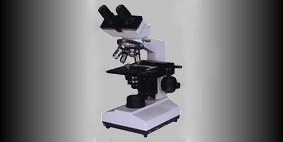.jpg)
